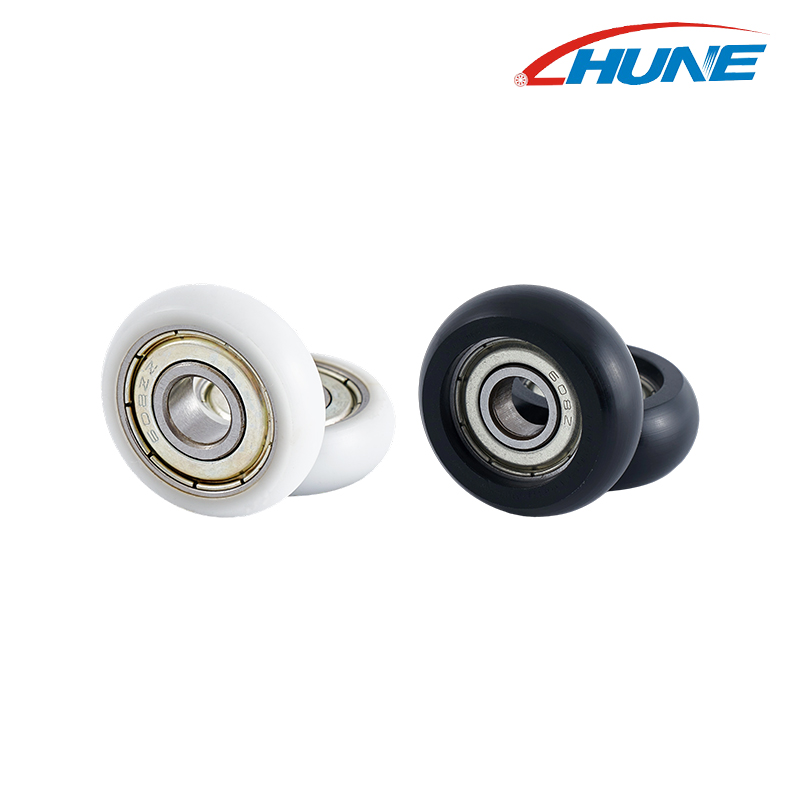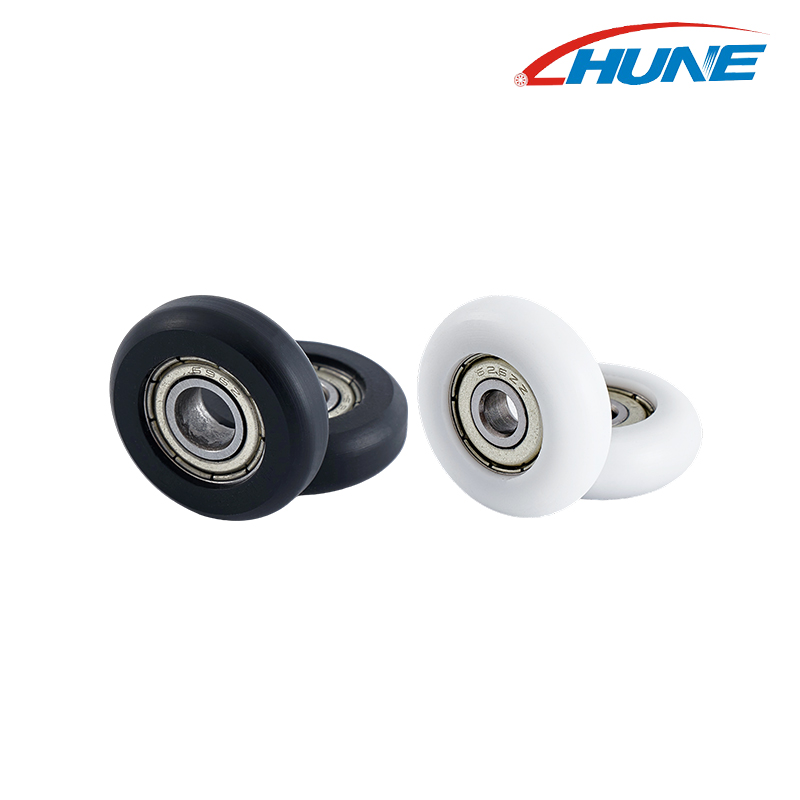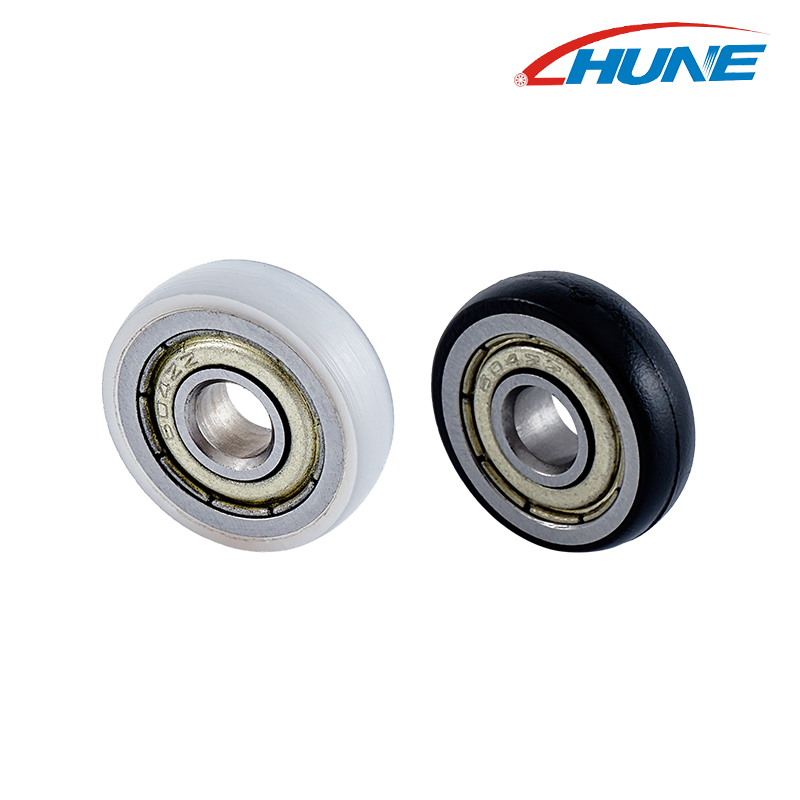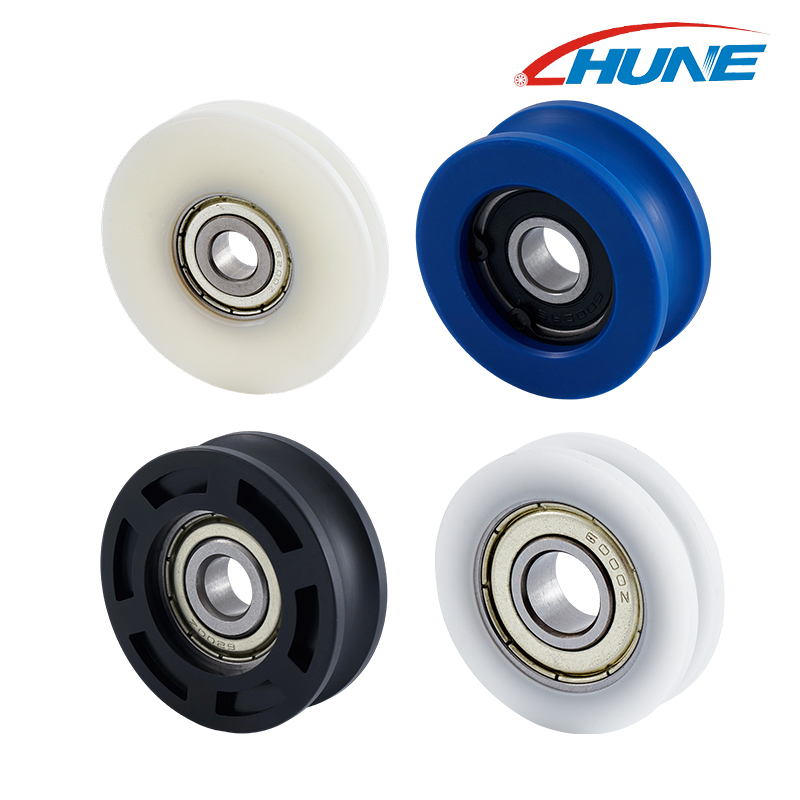Polyoxymethylene (POM), also known as Acetal, is a high-performance engineering plastic widely used in automotive and mechanical engineering for the manufacture of pulleys and other precision parts. POM is valued for its excellent combination of mechanical properties, including high strength, low friction, and durability, making it an ideal material for pulleys in demanding environments.
In automotive and mechanical systems, pulleys are crucial components used to transfer motion and power through the use of belts, ropes, or chains. POM pulleys are increasingly preferred over traditional materials such as metal due to their exceptional wear resistance, low maintenance requirements, and overall performance benefits.
What is POM Pulley and How Does it Work?
A POM pulley (Polyoxymethylene Pulley), also known as an Acetal pulley, is a high-performance, precision-engineered component made from POM plastic (Polyoxymethylene). POM is a strong, rigid thermoplastic material with excellent dimensional stability, low friction, and wear resistance. It is commonly used in automotive and mechanical engineering applications where precision and reliability are crucial.
What is POM?
Polyoxymethylene (POM) is a high-crystalline polymer known for its outstanding mechanical properties. It is often referred to as Acetal and is recognized for its low friction, high strength, excellent wear resistance, and dimensional stability. These characteristics make POM a popular choice for precision parts such as gears, bearings, and pulleys, where performance and durability are essential.
In the context of pulleys, POM is used to manufacture lightweight and high-performance pulleys that operate in various industrial, automotive, and mechanical systems. It is especially suitable for applications involving high-speed, high-torque, and constant motion.
How Does a POM Pulley Work?
A POM pulley operates similarly to traditional metal or plastic pulleys but offers superior performance in certain areas.
Motion Transfer:
A pulley is a mechanical component used to transfer motion and power from one part of a machine to another, usually by means of a belt, rope, or chain. The POM pulley is typically installed onto a shaft, and as the shaft rotates, the pulley follows, transferring this rotational motion to the belt or rope wound around it.
Low Friction:
One of the key benefits of POM pulleys is their low coefficient of friction. This property ensures that the pulley operates smoothly without generating excessive heat, which is a common problem in metal pulleys. In POM pulleys, friction is reduced significantly, leading to less wear on the belt, pulley, and other associated components. This results in improved efficiency and energy conservation in systems that use pulleys.
High Wear Resistance:
POM is highly resistant to abrasion, which allows the pulley to withstand repetitive motion without significant degradation. This is particularly important in applications where pulleys are subject to continuous wear, such as in automotive timing systems and conveyor belts.
Lightweight:
POM pulleys are lighter than their metal counterparts, which reduces the overall weight of the system. In automotive applications, for example, reducing weight can contribute to improved fuel efficiency and better handling. The reduced weight also makes POM pulleys ideal for high-speed applications where excess weight could cause inefficiencies.
Precision and Durability:
POM's dimensional stability means that POM pulleys retain their shape even under high-stress and high-tension conditions. This stability ensures that the pulley maintains precise contact with the belt or rope, ensuring accurate power transmission.
What Are the Unique Properties of POM: Strength, Durability, and Low Friction?
POM is known for its unique properties that make it a superior material for pulleys in both automotive and mechanical engineering:
1. Strength
POM exhibits exceptional strength compared to other engineering plastics. Its tensile strength is higher than that of many other thermoplastics, making it ideal for applications where parts are subjected to mechanical stress. POM pulleys can handle high torque loads, ensuring that they remain stable and function properly under challenging conditions.
2. Durability
POM's high wear resistance ensures a long lifespan, even in high-friction environments. Unlike metal pulleys, which can corrode or wear down over time, POM pulleys are resistant to abrasive wear, extending their lifespan and reducing the need for frequent maintenance or replacements. This durability makes POM pulleys an excellent choice for automotive timing systems, drive belts, and conveyor systems that operate under constant load.
3. Low Friction
One of the standout properties of POM is its low coefficient of friction. This results in smoother operation of pulleys, which reduces heat buildup and minimizes wear on both the pulley and the belt or rope. In automotive and mechanical systems, reduced friction improves energy efficiency, ensuring that the system operates smoothly without unnecessary power losses. This is especially important in systems that require high-speed operation or precise control, such as automotive engines and precision machinery.
POM's low friction also contributes to quieter operation, reducing the noise levels in systems that rely on pulleys for motion transmission, making it ideal for high-performance automotive applications and industrial machinery.
What Are the Key Advantages of POM Pulleys in Automotive Applications?
1. Reduced Weight for Improved Fuel Efficiency
One of the most notable advantages of POM pulleys in automotive applications is their lightweight nature. POM is significantly lighter than metals like steel or aluminum, which helps reduce the overall weight of a vehicle. This reduction in weight is particularly beneficial in the automotive industry, where every kilogram counts in terms of fuel efficiency and performance.
By replacing traditional metal pulleys with POM pulleys, automotive manufacturers can enhance fuel efficiency by reducing the weight of engine components and other systems. Lighter vehicles require less power to operate, which leads to better mileage and reduced carbon emissions. This is particularly important as the automotive industry increasingly shifts toward sustainability and energy-efficient technologies.
2. Corrosion Resistance in Automotive Environments
Automotive systems are subjected to harsh conditions, including exposure to moisture, oils, fuels, and chemicals. POM pulleys excel in these environments due to their excellent corrosion resistance. Unlike metal pulleys that may rust over time when exposed to moisture or corrosive fluids, POM is highly resistant to corrosion and will retain its strength and functionality even in challenging automotive environments.
This resistance to corrosion ensures longer-lasting pulleys, reducing the frequency of maintenance and part replacement, which ultimately contributes to lower operational costs for vehicle owners and manufacturers.
3. Improved Performance in High-Tension Automotive Systems
In automotive applications, pulleys are often required to operate under high-tension conditions, particularly in engine timing systems, serpentine belts, and powertrain components. POM pulleys are durable and strong enough to withstand high-tension environments while maintaining their integrity and performance.
The strength-to-weight ratio of POM allows it to handle the stresses and forces involved in high-speed operations without deforming or compromising functionality. This capability makes POM pulleys ideal for engine timing systems where precision is critical, helping improve the overall performance and reliability of the engine.
4. Noise and Vibration Reduction with POM Pulleys
POM's low coefficient of friction helps reduce friction and wear during operation, which is particularly important in automotive applications where noise and vibration can be a significant concern. In mechanical systems like engine timing, serpentine belts, and drive belts, friction can lead to noise and vibrations that negatively affect the vehicle's performance and comfort.
POM pulleys offer quieter operation due to their smooth surface and reduced friction compared to metal pulleys. This reduction in noise and vibration not only improves the driving experience but also contributes to the long-term durability of the entire system, as there is less wear on components due to friction.
How Does POM Compare to Other Materials in Pulley Applications?
While POM is widely praised for its superior properties, it's important to compare it to other common materials used in pulley manufacturing, such as metal alloys (steel, aluminum), nylon, and polyurethane. Each material has its strengths, but POM often stands out due to its balance of properties.
1. POM vs. Metal (Steel and Aluminum)
Strength: POM has a high strength-to-weight ratio, but metals like steel offer superior strength under extreme mechanical loads. However, POM is lighter than metal pulleys, which reduces the overall weight of the system, improving energy efficiency, particularly in automotive applications.
Corrosion Resistance: Unlike metals, POM is naturally resistant to corrosion, which is particularly valuable in environments exposed to moisture, oils, or other chemicals. Metal pulleys, unless coated, may rust over time, leading to deterioration.
Friction and Wear Resistance: POM offers superior low friction performance compared to metal, leading to reduced wear and longer service life. Metal pulleys tend to generate more friction and heat, which increases wear on both the pulley and the connected belt.
| Property | POM | Metal (Steel and Aluminum) |
|---|---|---|
| Strength | High strength-to-weight ratio, ideal for reducing system weight and improving energy efficiency | Superior strength under extreme mechanical loads, especially steel |
| Corrosion Resistance | Naturally resistant to corrosion, ideal for environments exposed to moisture, oils, and chemicals | May rust over time unless coated, leading to deterioration |
| Friction and Wear Resistance | Superior low friction performance, leading to reduced wear and longer service life | Generates more friction and heat, increasing wear on pulleys and connected belts |
2. POM vs. Nylon
Durability: While nylon is a strong and durable material, POM tends to be more wear-resistant and offers better dimensional stability over time, especially in high-stress environments.
Moisture Absorption: Nylon tends to absorb moisture, which can affect its mechanical properties and lead to dimensional changes. POM, on the other hand, is moisture-resistant, making it a more reliable choice for automotive and mechanical systems exposed to humid or wet conditions.
Friction: Nylon has a relatively low coefficient of friction, but POM's friction is even lower, resulting in smoother operation and less heat generation, which is crucial in high-performance applications.
| Property | POM | Nylon |
|---|---|---|
| Durability | More wear-resistant, with better dimensional stability, especially in high-stress environments | Strong and durable, but less wear-resistant and less stable under high stress |
| Moisture Absorption | Moisture-resistant, making it reliable for humid or wet environments | Absorbs moisture, affecting mechanical properties and leading to dimensional changes |
| Friction | Lower friction coefficient, resulting in smoother operation and less heat generation | Low friction, but higher than POM, which may result in more heat generation |
3. POM vs. Polyurethane
Flexibility and Toughness: Polyurethane is more flexible than POM, which can be an advantage in some applications, especially those that require resilience or flexibility under load. However, POM is stiffer, which makes it more suitable for precision mechanical applications where minimal deformation is desired.
Wear Resistance: POM tends to outperform polyurethane in high-wear environments due to its superior abrasion resistance. POM pulleys also perform better in high-speed applications where maintaining shape and precision is critical.
| Property | POM | Polyurethane |
|---|---|---|
| Flexibility and Toughness | Stiffer, ideal for precision mechanical applications where minimal deformation is required | More flexible, ideal for applications needing resilience or flexibility under load |
| Wear Resistance | Superior abrasion resistance, performing better in high-wear and high-speed applications | Less resistant to wear, especially in high-speed environments |
How POM Pulleys Enhance Performance in Mechanical Engineering
In mechanical engineering, pulleys are critical components in a variety of systems, including conveyor systems, robotics, automated machinery, and precision equipment. POM pulleys are becoming increasingly popular in these applications due to their superior properties that improve performance and longevity.
1. High Wear Resistance in Mechanical Applications
Mechanical systems often involve moving parts that experience constant wear, especially in high-load applications such as industrial conveyor systems, gear systems, and automated machinery. POM is known for its exceptional wear resistance, making it an excellent choice for pulleys that operate in these demanding environments.
The abrasion-resistant properties of POM help it withstand the friction and wear associated with continuous movement. As a result, POM pulleys offer extended service life, reducing the need for frequent replacements and minimizing downtime. This wear resistance is particularly beneficial in industrial machinery, where high operational hours and heavy-duty applications can put a strain on components.
2. Low Friction and High Load Capacity
POM pulleys are characterized by their low coefficient of friction, which is one of the key reasons for their widespread use in mechanical engineering. Low friction ensures that pulleys operate smoothly without generating excessive heat, reducing the risk of damage to the pulley, belt, or other system components.
In addition to low friction, POM pulleys have a high load capacity, allowing them to handle heavy loads while maintaining performance. This combination of low friction and high load-bearing capability makes POM pulleys ideal for high-tension conveyor systems, robotic arms, and other heavy-duty applications where precision and performance are crucial.
The low friction also translates into energy savings, as less energy is lost in the form of heat, leading to greater system efficiency.
3. Precision and Accuracy in Mechanical Systems
Precision is essential in many mechanical systems, particularly in applications involving automation, robotics, and high-precision machinery. POM's dimensional stability and low friction properties make it an excellent choice for precision pulleys that require tight tolerances and accurate motion control.
POM pulleys help maintain the accuracy of motion in automated systems, ensuring smooth and consistent operation even under high-speed or high-torque conditions. For example, in robotic arms, POM pulleys allow for precise positioning and repeatable movements, which is essential for manufacturing processes, assembly lines, and material handling systems.
Additionally, the long-term stability of POM ensures that the pulleys maintain their shape and performance over time, even in high-load, high-precision applications. This results in reduced maintenance needs and improved system reliability, which is especially important in critical manufacturing processes where downtime can be costly.
How Are POM Pulleys Used in Automotive Design and Manufacturing?
Polyoxymethylene (POM) pulleys are playing an increasingly important role in automotive design and manufacturing. Their unique properties—such as high strength, wear resistance, and low friction—make them ideal for various automotive components, offering both performance and reliability in harsh environments.
1. Applications in Engine Components and Timing Systems
In modern automotive engines, timing systems are critical to ensuring that various components, such as valves and camshafts, operate in synchronization with the engine's crankshaft. POM pulleys are increasingly used in engine timing systems due to their low friction, high wear resistance, and dimensional stability. The low friction helps reduce the strain on timing belts, ensuring smooth and efficient engine operation while minimizing heat buildup and wear. This is crucial in high-performance engines, where precision and reliability are essential.
Additionally, POM pulleys offer weight-saving benefits compared to traditional metal pulleys. A lighter pulley reduces the overall weight of the engine, leading to better fuel efficiency and enhanced performance. The durability of POM pulleys in engine components also helps extend the lifespan of the engine, ensuring that the timing system functions smoothly for a longer period.
2. POM Pulleys for Transmission and Powertrain Systems
The transmission and powertrain systems are among the most demanding parts of an automobile, transferring power from the engine to the wheels. POM pulleys are widely used in these systems to optimize performance and reduce the overall weight of the vehicle. In particular, serpentine belts and drive belts rely on pulleys to transfer power efficiently and reliably.
POM's low friction properties allow for smoother operation of pulleys in the transmission system, reducing energy loss and improving fuel efficiency. These pulleys also have the ability to handle high-tension loads, which makes them ideal for powertrain applications that demand both strength and reliability. Furthermore, POM's resistance to wear and corrosion ensures that these pulleys maintain optimal performance even in the presence of oils, lubricants, and other fluids found in transmission systems.
3. POM Pulleys in Steering and Suspension Systems
POM pulleys are also used in steering and suspension systems, where their precision and low friction properties are highly beneficial. In power steering systems, pulleys play a role in transferring power from the engine to the steering pump. POM pulleys' lightweight and high strength ensure that steering components can handle the mechanical stresses of steering, reducing wear and vibration.
In suspension systems, pulleys are used to control various parts that adjust ride height and handle suspension loads. POM's durability and dimensional stability under pressure make it an ideal material to withstand the continuous motion and tension found in suspension components, ensuring smooth and reliable operation over time.
What Are the Benefits of POM Pulleys for Industrial and Manufacturing Equipment?
In industrial applications, pulleys are essential components used to transmit power and motion across various systems. POM pulleys, with their unique blend of strength, low friction, and wear resistance, are increasingly being used to optimize performance and increase durability in industrial equipment.
1. Optimizing Performance in Conveyor Systems
Conveyor systems are vital for the smooth and efficient movement of goods in manufacturing plants, warehouses, and logistics centers. POM pulleys are commonly used in conveyor systems due to their high load capacity, low friction, and wear resistance. The low friction characteristic of POM ensures that the belts glide smoothly over the pulleys without significant wear, improving the efficiency of the system and reducing energy loss.
Additionally, POM pulleys' corrosion resistance makes them well-suited for use in environments where moisture, chemicals, or oils are present, such as in food processing or chemical manufacturing. The wear resistance of POM ensures a long-lasting solution for high-traffic conveyor systems, reducing downtime for maintenance and part replacement.
2. POM Pulleys in Robotics and Automation
In the field of robotics and automation, precision and durability are critical. POM pulleys are increasingly used in these applications due to their ability to handle high loads while maintaining precision and accuracy. In robotic arms, conveyor systems, and automated assembly lines, pulleys must operate at high speeds and under constant motion. POM's low friction and high wear resistance contribute to smoother operations and longer service life for the robotic systems.
The dimensional stability of POM also ensures that pulleys maintain their shape and performance even after prolonged exposure to high stress, enabling high-precision movements in robotics. These pulleys are particularly effective in reducing energy consumption and improving the overall efficiency of automated systems.
3. Cost-Effectiveness and Durability in Long-Term Use
POM pulleys offer significant cost-effectiveness in the long run, despite their higher upfront cost compared to other materials like plastic or metal. The durability of POM ensures that pulleys perform reliably over time, even in harsh industrial environments. This longevity reduces the need for frequent replacements, leading to lower maintenance costs and minimized downtime in manufacturing processes.
Furthermore, POM's lightweight nature reduces the overall weight of machinery, leading to improved energy efficiency. In high-speed applications, the reduced weight ensures that the system operates with less power loss, further contributing to energy savings.
POM's resistance to abrasion and corrosion also ensures that pulleys continue to operate smoothly even under demanding conditions, such as in high-temperature, high-moisture, or chemically aggressive environments. This makes POM pulleys particularly valuable for long-term use in heavy-duty industrial equipment, ensuring both performance and cost-effectiveness.
What Are the Key Design Considerations for POM Pulley Manufacturing?
When manufacturing POM pulleys (Polyoxymethylene pulleys), various design considerations need to be accounted for to ensure optimal performance, durability, and cost-efficiency. These pulleys are integral components in automotive systems, mechanical engineering, and industrial applications, requiring precise manufacturing processes to meet the demands of modern machinery and vehicles.
1. Design Flexibility and Customization
One of the primary advantages of POM pulleys is their design flexibility. POM, as a thermoplastic material, allows for a wide range of customization options in terms of size, shape, and functionality. Manufacturers can design pulleys to fit specific system requirements, which is particularly important in automotive engineering and industrial machinery, where components need to fit precisely within confined spaces and unique configurations.
Customization allows for adjustments in the pulley's diameter, thickness, and groove profile, depending on the specific application. For instance, POM pulleys can be designed with special grooves for timing belts, serpentine belts, or V-belts, ensuring seamless operation and reducing wear. Furthermore, non-standard designs can be created to fit special applications, such as robotic systems or automated machinery.
2. Tolerance and Precision in POM Pulley Production
Precision and tight tolerances are vital in POM pulley manufacturing, especially when pulleys are used in automotive systems and precision machinery. High tolerances ensure that pulleys function accurately in their systems, transferring motion efficiently and with minimal friction. The pulleys must align perfectly with the belt or chain that they drive, as any deviation in diameter or shape can lead to inefficiencies, increased wear, and potential system failure.
The manufacturing process for POM pulleys typically involves precision molding or machining to achieve the required tolerances. CNC machining or injection molding are commonly used techniques that allow manufacturers to produce parts with extreme accuracy. These techniques ensure that POM pulleys meet the performance standards necessary for high-tension automotive applications and high-precision industrial equipment.
Additionally, achieving dimensional stability is essential, as POM can expand or contract under varying temperatures or mechanical stresses. Manufacturers must account for this factor to ensure the pulley maintains its shape and functionality over time.
3. Materials and Manufacturing Techniques for Enhanced Strength
Although POM is known for its inherent strength, durability, and wear resistance, manufacturers often enhance its properties by modifying the base material or using composite additives. For example, glass-reinforced POM is a popular variant that improves strength, stiffness, and dimensional stability. Glass fiber or carbon fiber reinforcement can significantly enhance the load-bearing capacity of the pulley, making it suitable for high-stress automotive components and heavy-duty industrial equipment.
The manufacturing technique also plays a role in optimizing the strength of the pulley. For instance, injection molding provides excellent precision and is widely used for mass production, ensuring that each pulley maintains consistent quality. Compression molding and extrusion molding are also employed to achieve the necessary strength and durability for high-performance pulleys. Additionally, heat treatment processes can be used in some cases to increase the mechanical properties of the POM, ensuring it can withstand high temperatures and high-stress conditions.
These attributes make POM pulleys a superior choice over traditional materials like metals and nylon, offering longer service life, reduced maintenance costs, and improved energy efficiency. Whether in the demanding environments of automotive systems or the precision-required mechanical engineering processes, POM pulleys play a vital role in boosting system efficiency and reliability. Their versatility, cost-effectiveness, and ability to withstand extreme conditions make them a smart investment for manufacturers seeking durable, high-performance solutions in modern engineering.






 English
English  Español
Español  日本語
日本語 









